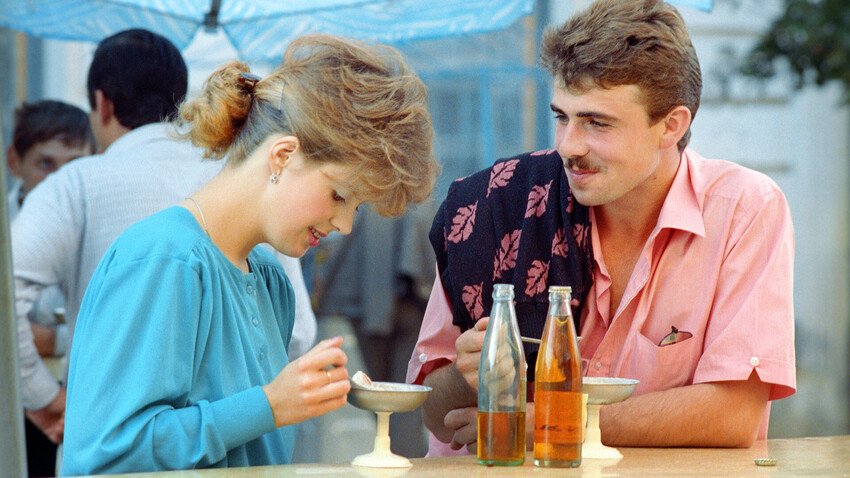
Summer cafe in Tver, 1990.
Alexander Ovchinnikov/TASSOne of the most famous Soviet slogans was the call for freedom from “kitchen slavery”. People could eat in a huge array of canteens, cafes and restaurants. And, of course, Soviets had their own “fast food”. But what would they choose for a quick snack?
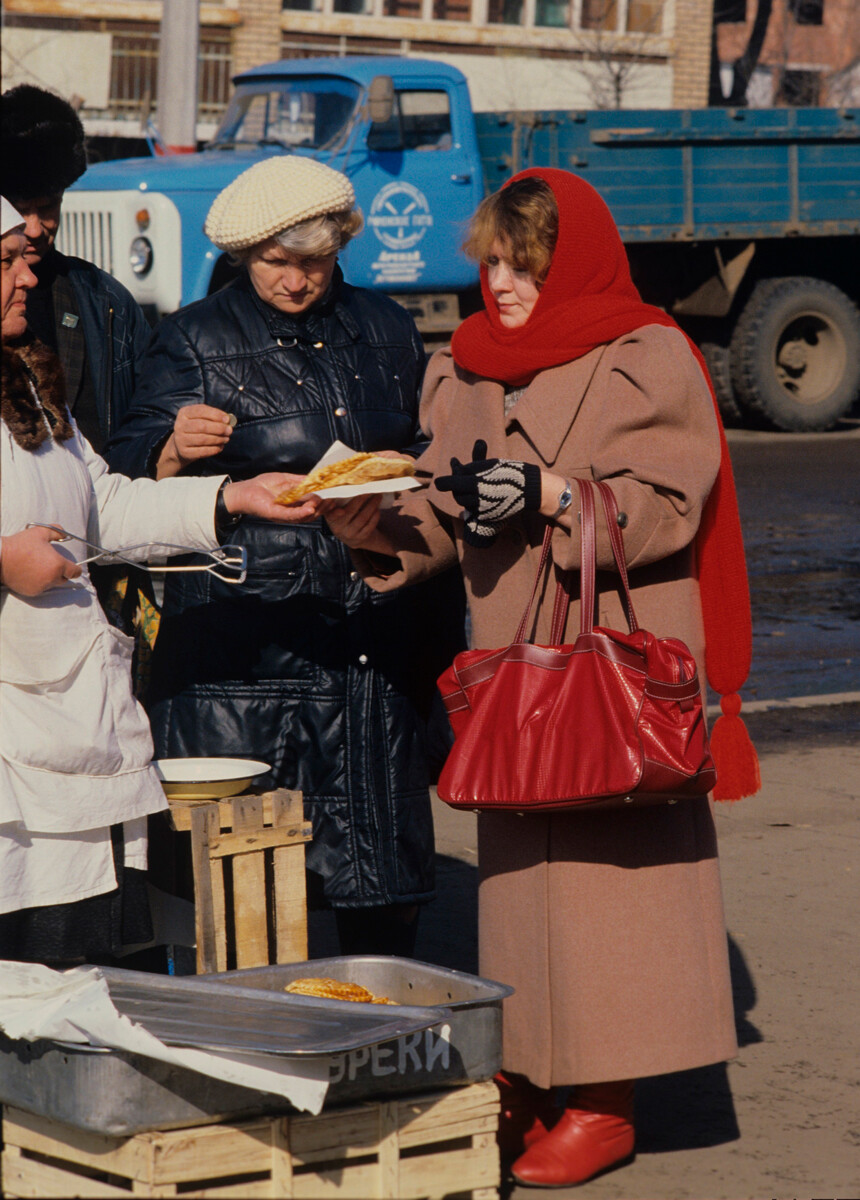
Cheburek kiosk outside Moscow, 1989.
Alexander Grashchenkov/SputnikThis deep fried pie filled with minced meat is the most famous dish in Crimean-Tatar cuisine. Chebureks became popular in the Soviet Union with the development of the Black Sea resorts, where you could buy them on the way to the beach. After that, so-called “cheburechnaya” cafes began to open across the country. In such cafes, you could eat not only meat pies, but also one with cheese or herbs and drink coffee (or something stronger!).
The Cheburechnaya ‘Druzhba’ on Sukharevskaya Square, opened in 1957, is still serving guests in Moscow. Its diners come here for the nostalgic atmosphere - and for their favorite chebureks, of course! And at the Black Sea resorts, it is still popular street food.
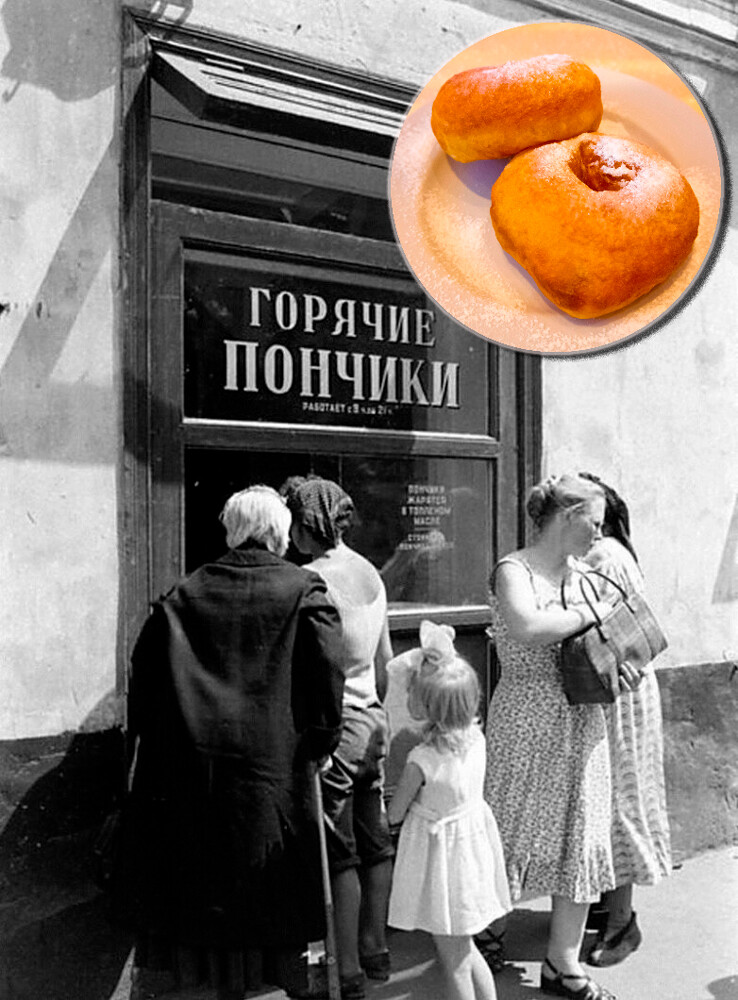
Selling donuts in Moscow. 1960s.
LIFE / pastvu.com; Legion MediaPetersburgers call them ‘pyshki’ and cafes that specialize in them are called ‘pyshechnaya’. Muscovites call them ‘ponchiki’ and the cafes serving them – ‘ponchikovaya’. They say these donuts are really different, but this topic always raises debates.
In any case, Soviet donuts are very different from the American version: it’s just fried dough with a hole in the middle and covered with sugar powder. To be full, you needed just 3-4 donuts.
In St. Petersburg, pyshki is still a part of local cuisine - there are many ‘pyshechnayas’ there where you can try this Soviet classic.
In Moscow, ‘ponchikovayas’ are preserved in Sokolniki and VDNKh parks.
Also, in Tatarstan and Bashkiria you can try ethic donuts called ‘baursaki’.
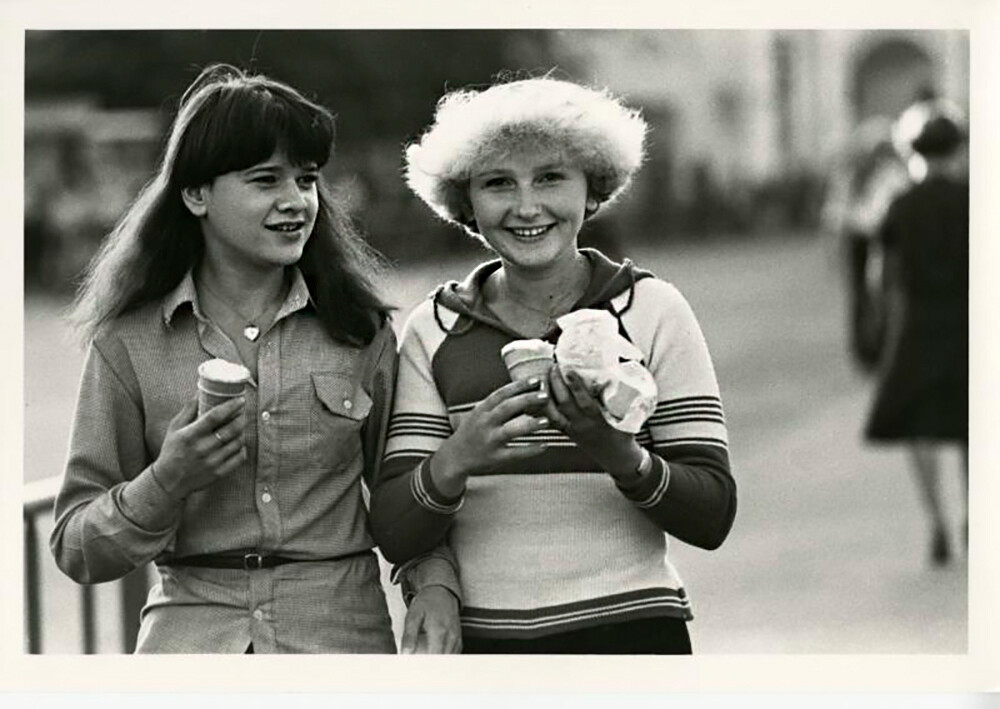
Moscow teens enjoy ice cream, 1983.
Viktor Akhlomov / MAMM / MDF / Russia in photoIce cream kiosks in the USSR were very popular not only in parks, but also in department stores. Many people went to the GUM, Moscow’s Main Department Store, just to buy their special ice cream in a waffle cone. Ice cream was always on sale, even in winter, and was very popular.
Today, in large cities, you can see modern ice cream kiosks, maybe in smaller quantities, but with a greater variety of types.
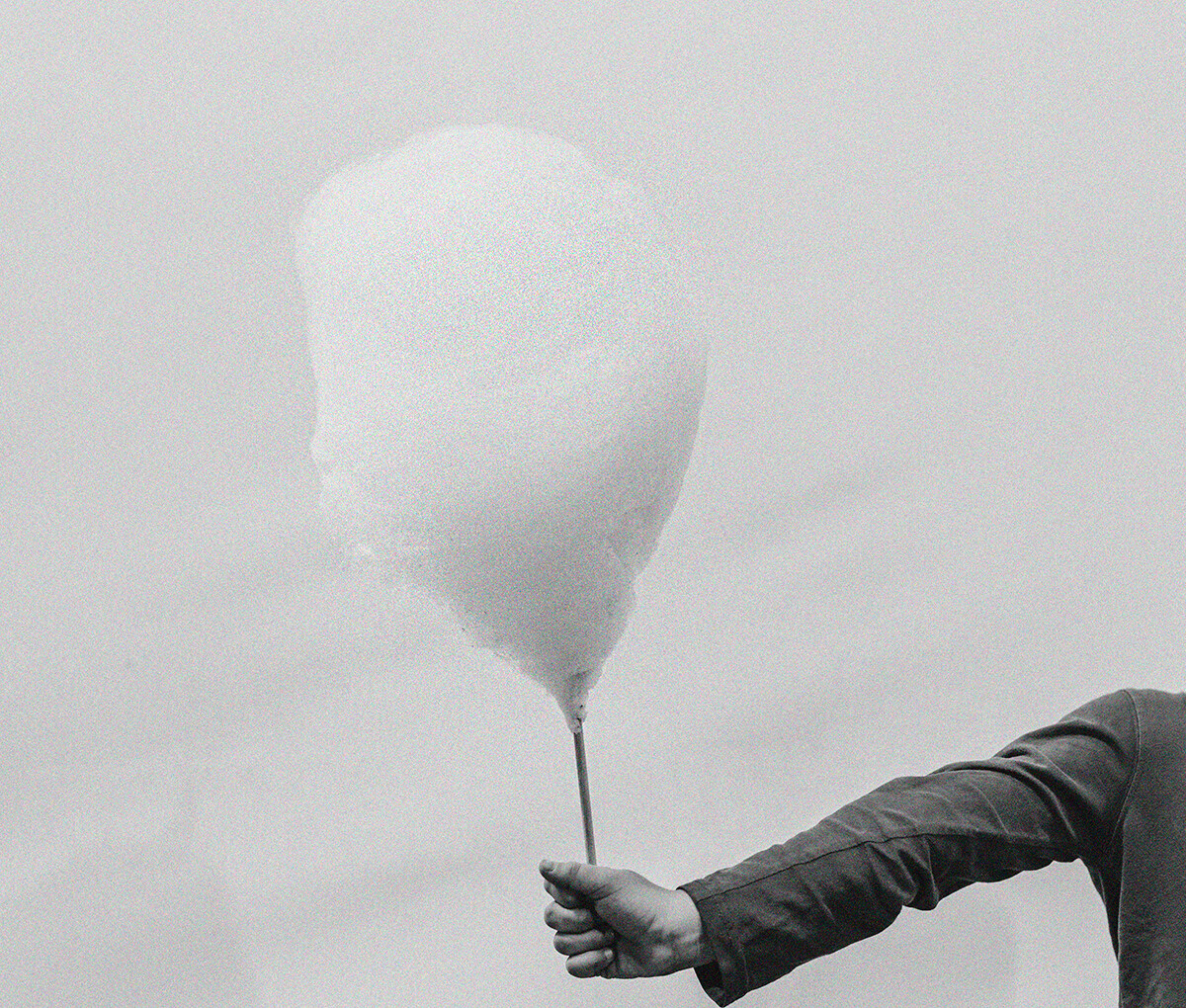
You could eat cotton candy in any Soviet park in the summertime. It was one of the most favorite (and affordable) treats of any child. The only ingredients were sugar and syrup, which tinted the cotton candy. It came in white, blue, pink, yellow and green colors.
Today, cotton candy is not as popular in Russia, however.
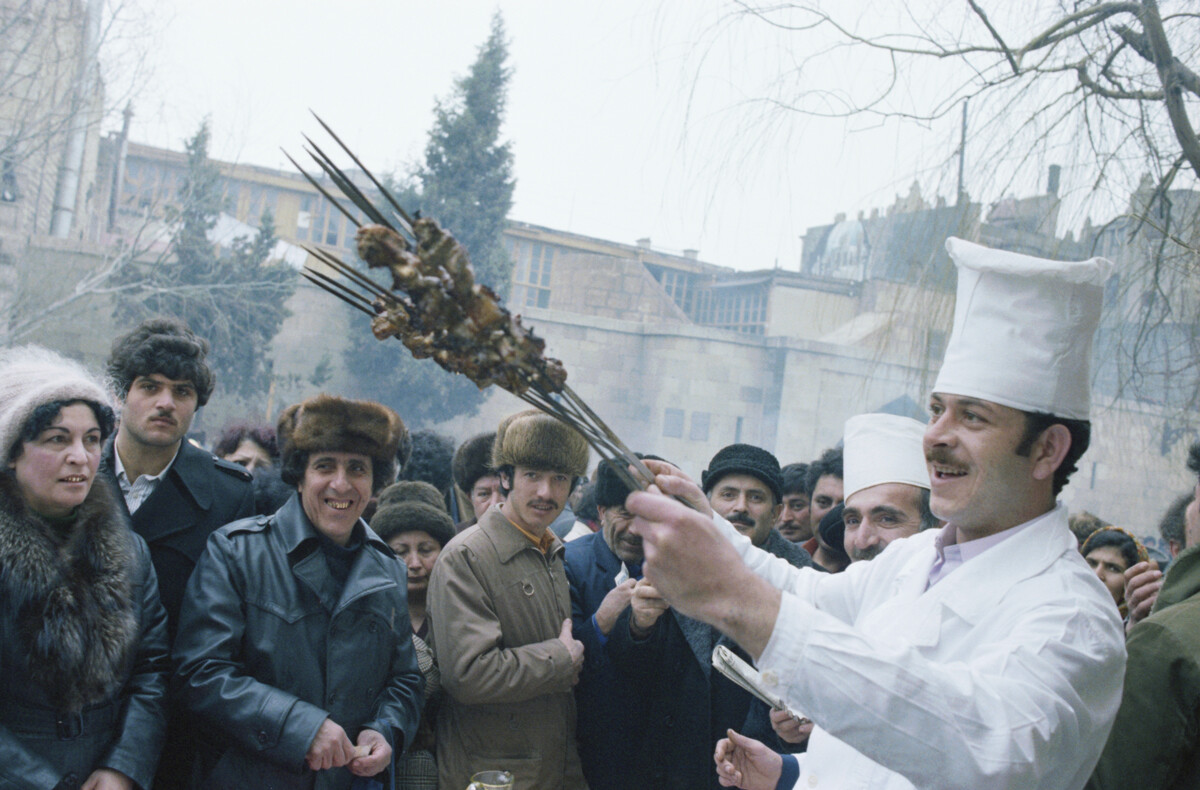
Cooking shashlik outside, 1984.
Agali Mamedov, Yashar Khalilov/TASSGrilled meat on a skewer is a traditional Caucasian dish that became synonymous with summer weekends in the Soviet times. The Soviets simply loved their outdoor BBQ parties. Besides making it yourself, shashlik was one of the most popular street foods, from the Baltics territories to the Far East. But, of course, the tastiest shashlik can be found in the Caucasus.

Pies on sale, 1985.
Alexander Ovchinnikov/TASSRussian folk food - a pirozhok (baked or fried yeast-leavened boat-shaped bun with different fillings - was sold in stalls at markets, railway stations and in special cafes called ‘pirozhkovaya’. Inside, there were tall tables where you could only stand. A guest could choose from a dozen kinds of pirozhki and drink hot tea. It was also useful to take pirozhki from such cafes with you for the road.
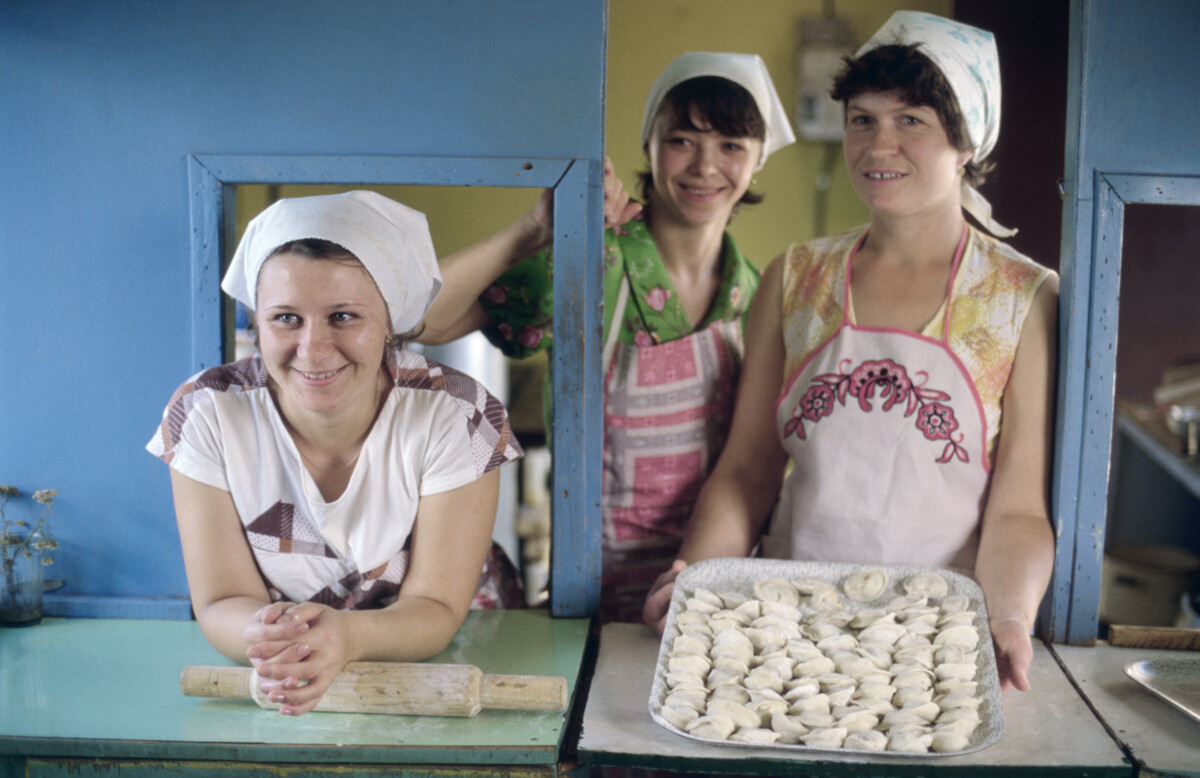
Dumplings in a canteen, Amur Region, 1986.
V. Tarabashchuk/TASSAnother version of fast food cafe with a mono-cuisine was the ‘pelmennaya’. In Soviet times, these were very cheap places where there was often only one type of pelmen (dumpling). In the Urals, in addition to various meat dumplings, you could also find fish pelmeni. It was usually accompanied with sour cream or mayonnaise.
These days, such fast food can be found in malls and gastronomic streets, but they now look like modern cafes.
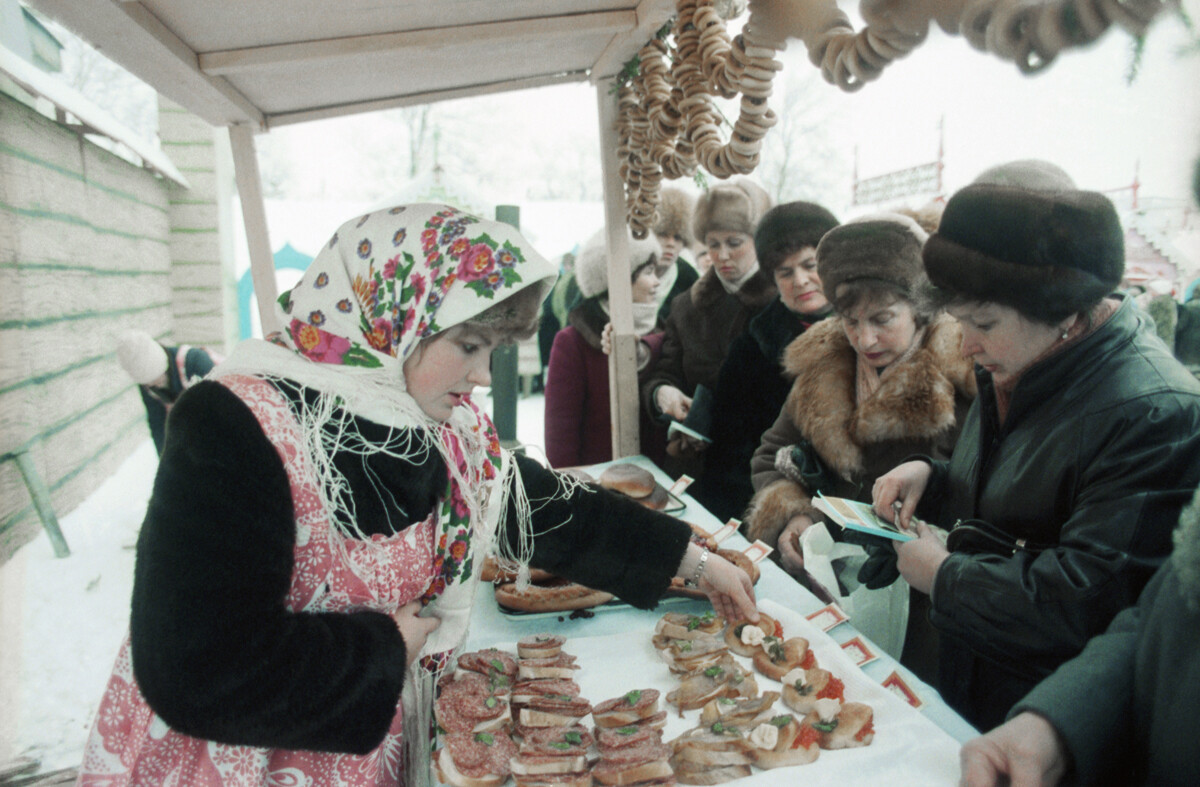
Suzdal, 1987.
Sergei Metelitsa/TASSThe main snack in the USSR was butterbrot - taken from German and translated as “sandwich”, but it looked slightly different. In essence, it was just Russian bread with butter and something else, such as sausage, cheese, cucumber or even red caviar.
Sandwiches were usually made at home, but if you wanted them for a snack, they were available at any fast-food cafe. In Soviet times, there were vending machine cafes in large cities that sold these sandwiches. Today, that format hardly exists anymore, although some cafes do have Soviet-style sandwiches on their menus. Instead, you see European-style sandwiches much more often.
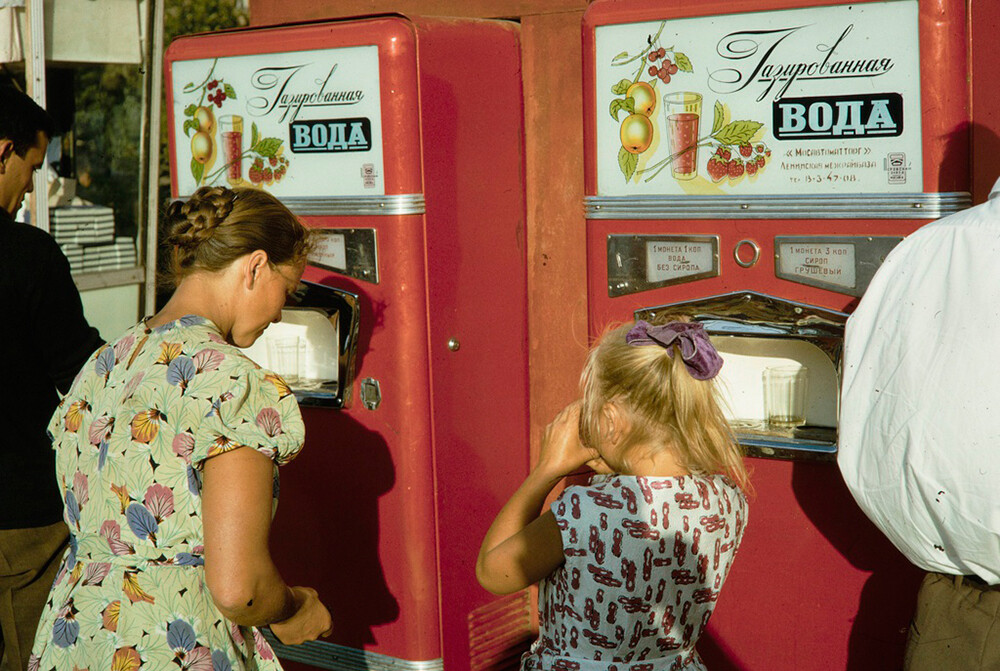
Soda on sale, 1960s.
Harrison Forman / Leonoro Karel archive / Russia in photoThere were vending machines selling different kinds of soft drinks in every park: after cotton candy and ice cream, you were very thirsty! Usually, you could choose between either soda water or soda water with syrup. Additionally, everyone drank from the same glass which came with the vending machine, just rinsing it with water!
Now, such machines can only be found in museums.
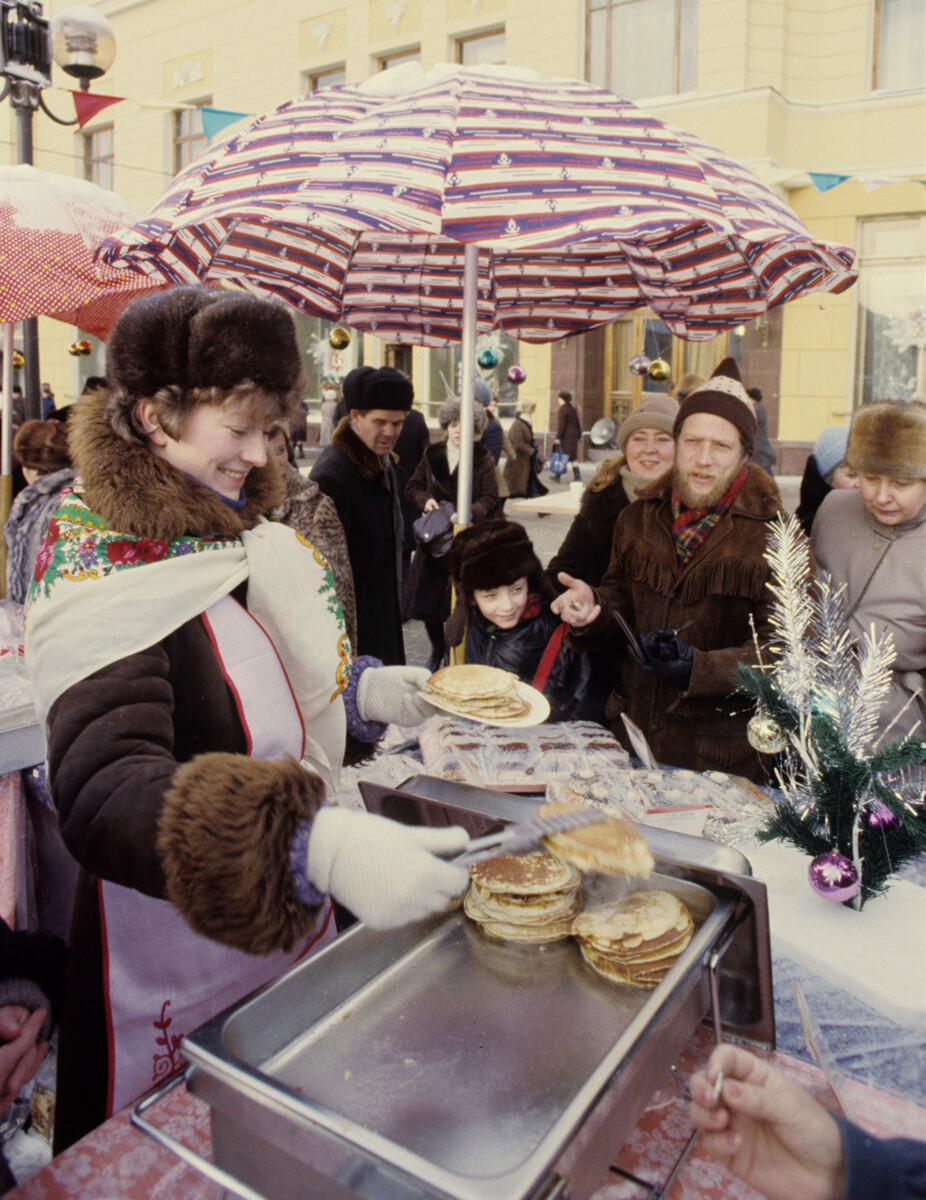
Selling blini, 1987.
Sputnik‘Blinnays’, or pancake cafes, were less common in the USSR than ‘cheburechnayas’ or ‘ponchikovayas’. They prepared blini (pancakes) with butter, sour cream, jam, condensed milk and meat. But, pancakes with caviar, for instance, were not available everywhere.
These days, there are pancake kiosks in almost every shopping mall.
Dear readers,
Our website and social media accounts are under threat of being restricted or banned, due to the current circumstances. So, to keep up with our latest content, simply do the following:
If using any of Russia Beyond's content, partly or in full, always provide an active hyperlink to the original material.
Subscribe
to our newsletter!
Get the week's best stories straight to your inbox